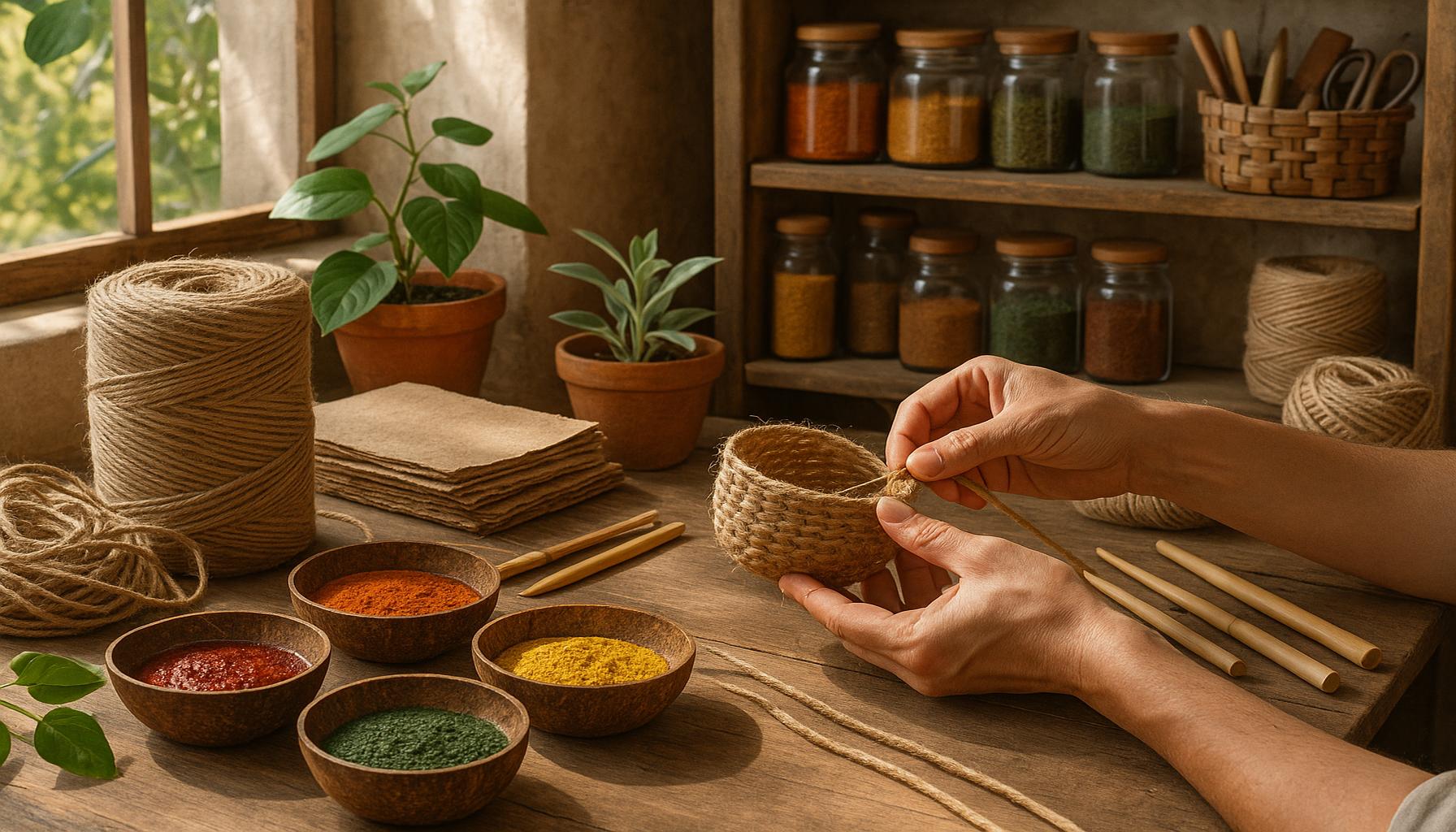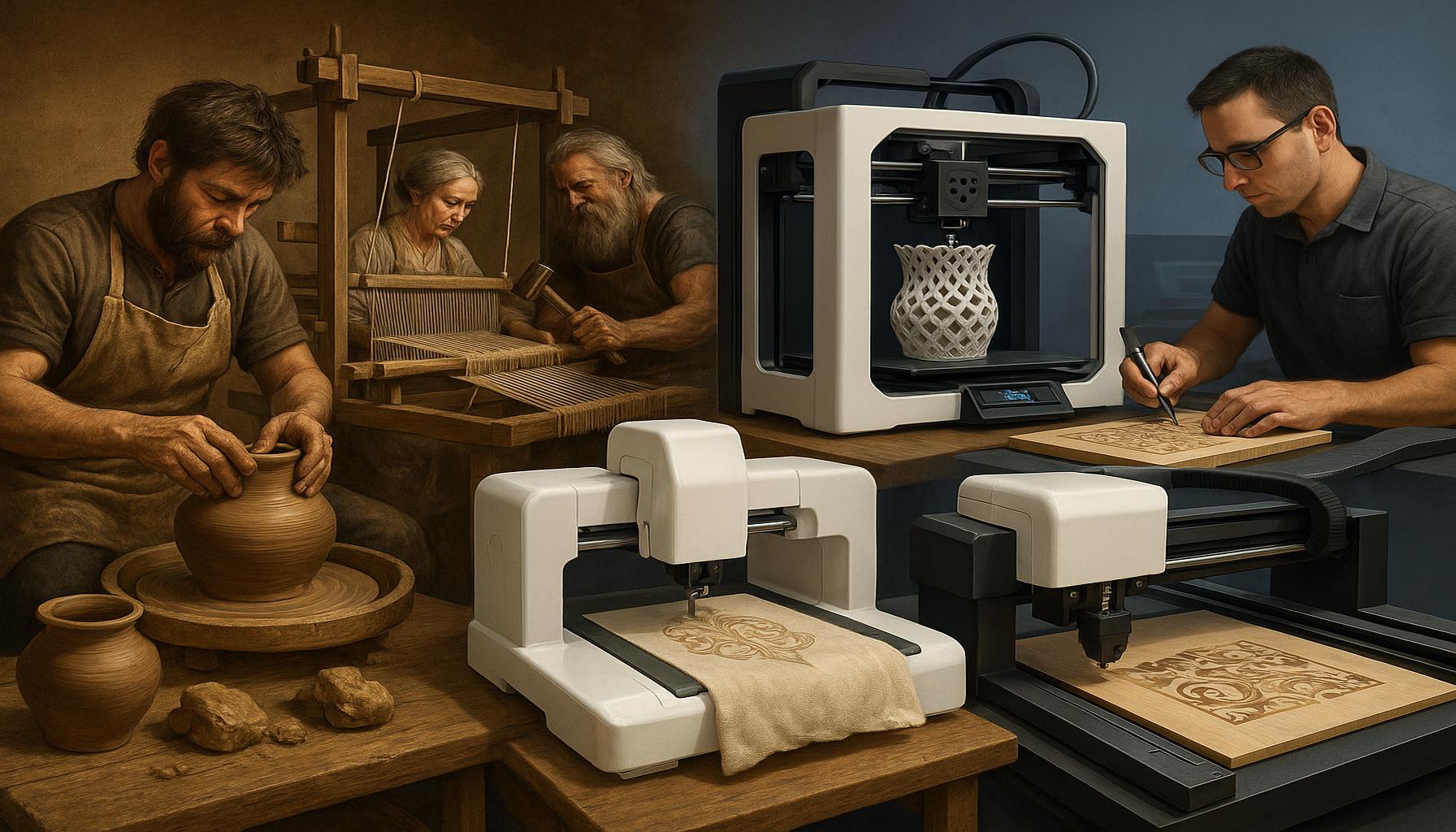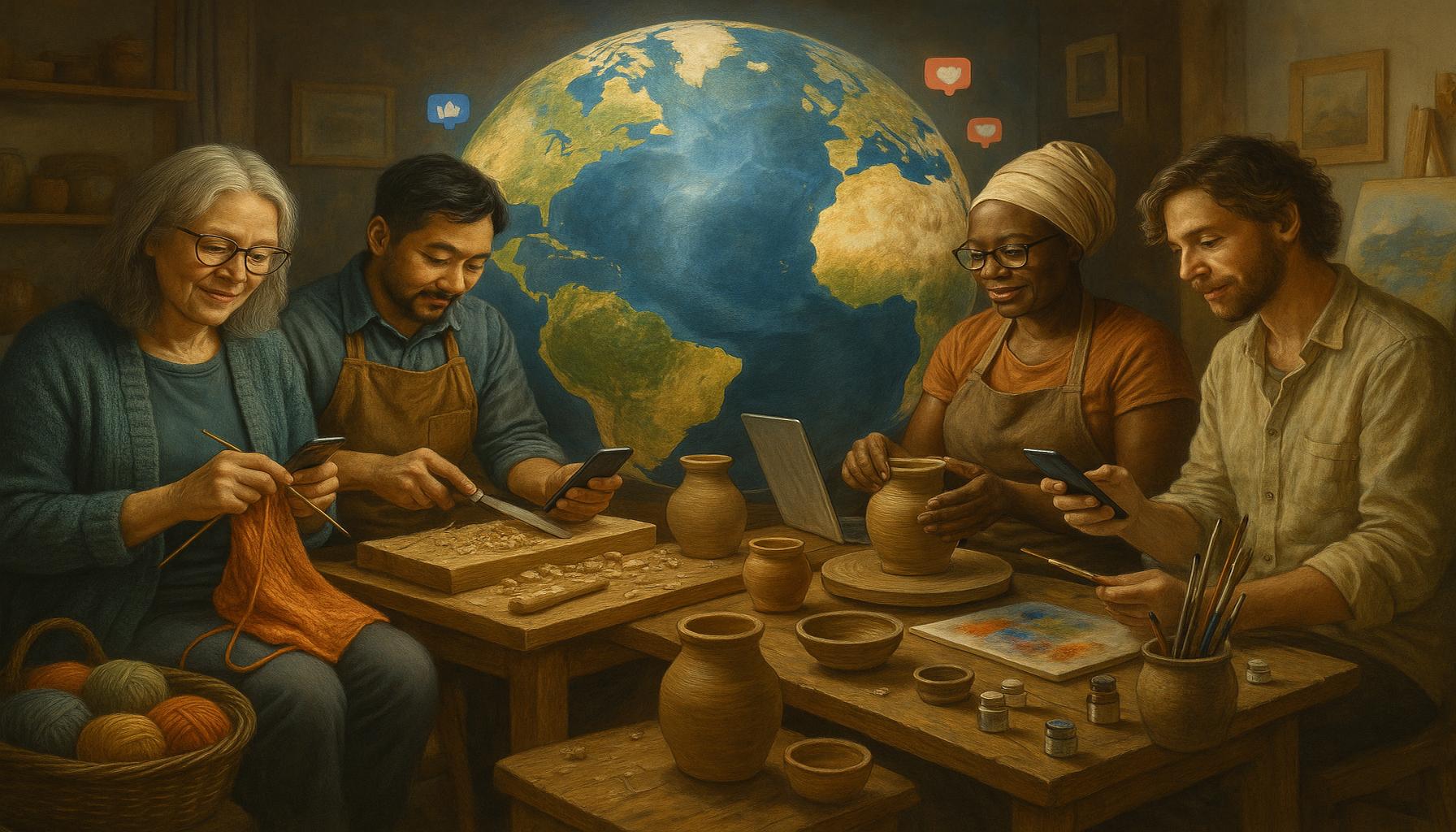Sustainable Crafting: Eco-Friendly Materials and Techniques for Eco-Conscious Creators

Understanding Sustainable Crafting
In recent years, the crafting landscape has undergone a transformation, driven by heightened awareness of environmental issues. Artists and creators are now harnessing their skills to cultivate a more sustainable approach to creativity. This shift is not just a passing fad; it’s a roadmap to a healthier planet and a more conscientious artistic community.
Key Components of Sustainable Crafting
Material Selection: When it comes to sustainable crafting, the type of materials chosen plays a critical role in minimizing environmental impact. For instance, natural fibers—cotton, linen, and hemp—offer biodegradable options compared to synthetic alternatives that can take hundreds of years to decompose. Additionally, using recycled plastics for crafts such as jewelry or home décor not only reduces waste but also delivers unique, eye-catching pieces. Sustainable sourcing of wood, ideally from FSC-certified forests, supports responsible forestry practices while ensuring that the material is renewable.
Low-Impact Techniques: Techniques such as upcycling have gained traction among eco-conscious creators. Upcycling involves transforming discarded items into new products, giving them a second life and reducing landfill contributions. For example, old glass jars can be turned into stylish storage solutions, while worn-out textiles can be fashioned into fashionable accessories. Such methods not only promote creativity but also tell a story of rebirth for items otherwise deemed useless.
Mindful Consumption: In the age of consumerism, crafting sustainably requires a shift in mindset. Instead of accumulating a vast array of inexpensive supplies, investing in fewer high-quality tools can significantly reduce waste and enhance the crafting experience. Choosing durable and versatile tools often leads to better craftsmanship and longevity of projects. For instance, a well-made pair of scissors or a reliable adhesive can be used in various projects over the years, representing a commitment to quality over quantity.
Broader Aspects of Eco-Conscious Creativity
Sustainability in crafting also extends beyond the materials and methods used. Community Engagement is paramount; collaborating with local artists or participating in workshops fosters a sense of belonging and shared responsibility for the environment. Communities can organize swap meets where crafters exchange materials, reducing waste and encouraging exploration of new mediums.
Educational Resources about sustainable practices are becoming increasingly accessible. Numerous online platforms offer tutorials on eco-friendly crafting techniques, inspiring countless individuals to adopt sustainable habits. Websites like YouTube or platforms focused on DIY projects provide a wealth of information that empowers creators to innovate responsibly.
Additionally, Brand Responsibility is crucial for consumers. Choosing to support businesses that prioritize eco-friendly practices ensures that your crafting supplies positively impact the environment. Look for companies that use recycled materials or produce their products with minimal ecological footprints. This informed consumer base will encourage more companies to adopt sustainable practices.
By delving into sustainable crafting, not only can we express our creativity, but we can also contribute to a vital cause—protecting our planet. Embracing these principles allows creators to channel their artistic energies into endeavors that inspire change, and with each eco-conscious project, we take a step towards a healthier, greener future.
DIVE DEEPER: Click here to discover more about digital art tools and techniques
Exploring Eco-Friendly Materials for Crafting
As we delve deeper into the world of sustainable crafting, one of the most significant elements to consider is the materials used. Eco-conscious creators are becoming increasingly aware that every supply choice impacts not only their creations but also the larger environment. From fabric to embellishments, opting for materials that reflect a commitment to sustainability is crucial in reducing waste and preserving natural resources.
Types of Eco-Friendly Materials
Here are some sustainable materials that makers can incorporate into their projects:
- Organic Cotton: Unlike conventional cotton, organic cotton is grown without harmful pesticides, fertilizers, or genetically modified seeds. This not only results in a softer, more durable fabric but also supports healthier ecosystems.
- Bamboo: Known for its rapid growth and minimal resource requirements, bamboo is a sustainable choice for fabric and craft materials. As a renewable resource, it is biodegradable and has antibacterial properties, making it ideal for textiles.
- Recycled Paper: Whether used for card making, scrapbooking, or art journaling, recycled paper is a great way to cherish creativity without contributing to deforestation. Many brands offer handmade options, adding a unique touch to projects.
- Natural Dyes: Traditional synthetic dyes can be harmful to the environment, but natural dyes made from plants, fruits, and vegetables offer vibrant color solutions. Not only are they biodegradable, but they can also enhance the aesthetic appeal of a craft.
- Repurposed Materials: Using items such as fabric scraps or upcycled wood not only reduces waste but also brings character and history to projects. This avenue encourages makers to think outside the box and embrace the beauty of imperfections.
Beyond just their inherent properties, these eco-friendly materials often inspire a new wave of creativity among crafters. They offer a unique flavor to projects, inviting the opportunity to tell stories—where the materials originated and the journey taken to transform them into art. Crafting with sustainable materials not only honors the planet but also aligns with a growing movement towards personal responsibility and environmental stewardship.
Innovative Techniques for Reduced Environmental Impact
Equally important as the materials are the techniques used in sustainable crafting. Traditional methods can often overshadow innovative, eco-friendly techniques, but by integrating approaches like low-impact dyeing or using biodegradable adhesives, crafters can significantly lower their ecological footprint. Techniques such as digital crafting, where creators utilize technology to design and produce projects, reduce waste associated with traditional crafting tools.
Moreover, exploring alternative fastenings—like biodegradable buttons or untreated twine—can elevate the sustainability of every project. These tools ensure that the entire product cycle, from creation through disposal, remains eco-friendly and can dissolve back into the earth upon their life’s end.
As we navigate through the labyrinth of sustainable crafting, understanding the synergy between materials and techniques reflects a commitment to an eco-friendly ethos. With each project, crafters can influence the landscape of creativity, creating lasting change one stitch, one brushstroke, and one idea at a time.
| Eco-Friendly Materials | Sustainable Techniques |
|---|---|
| Bamboo Fiber | Upcycling |
| A fast-growing, renewable resource, bamboo fiber is breathable and biodegradable, making it an ideal choice for eco-conscious projects. | This technique transforms old items into new creations, significantly reducing waste and promoting creativity. |
| Organic Cotton | Natural Dyes |
| Grown without chemicals or pesticides, organic cotton supports sustainable agriculture and is softer for your skin. | Using plant-based dyes reduces chemical runoff, making your crafting process safer for both the environment and your health. |
The ongoing exploration of eco-friendly materials and sustainable techniques in crafting not only fosters creativity but also enhances environmental consciousness. As you delve deeper into the world of sustainable crafting, the potential for innovation is vast. For instance, the combination of bamboo fiber and upcycling highlights a remarkable synergy where discarded items are reinvigorated with fresh, breathable textile products, resonating with eco-aware creators looking to minimize impact. Moreover, adopting natural dyes along with organic cotton creates a unique opportunity to champion both aesthetics and sustainability. By embracing these materials and methods, creators can craft pieces that not only visually captivate but also serve as a testament to responsible craftsmanship. The growing demand for such creations signifies a pivotal shift toward eco-conscious consumerism that excites both makers and buyers alike. This vibrant dialogue around sustainable crafting invites a deeper inquiry into practices that prioritize our planet and promote mindful crafting.
DISCOVER MORE: Click here to learn about sustainability trends
Incorporating Sustainable Practices into Your Crafting Routine
The journey towards sustainable crafting extends beyond the choice of materials and techniques; it also involves adopting eco-friendly practices within one’s creative routine. For many creators, this may mean re-evaluating their entire approach to crafting, from the sourcing of materials to the methods of disposal after a project’s completion. Making small changes can lead to substantial impacts over time, resonating well with the ethos of environmental responsibility.
Waste Reduction Strategies
One of the primary concerns in the crafting community is the generation of waste. As makers, it’s essential to embrace waste reduction strategies that limit the environmental impact. Here are some effective methods:
- Plan Ahead: Before beginning any project, take the time to plan and sketch designs. This can help minimize mistakes and unnecessary material waste.
- Leftover Materials: Save fabric scraps, paper trimmings, and other remnants from completed projects. These can be repurposed into new creations—think patchwork quilts or collages—keeping materials in circulation rather than heading to a landfill.
- Collaborate and Share: Engaging with fellow crafters can lead to a sharing culture where unused materials are exchanged. Organizing swap meets or community events can foster this collaborative spirit, reduce waste, and build community connections.
- Composting Organic Materials: For those who engage in natural dyeing or work with plant materials, composting leftover organic substances not only reduces waste but also enriches the environment.
Embracing Local Sourcing and Handmade Goods
Another effective approach to sustainable crafting is prioritizing local sourcing and handmade goods. Supporting local artisans not only helps reduce the carbon footprint associated with shipping but also fosters community economies. Many local suppliers focus on sustainable practices, ensuring that your materials are both ethically sourced and environmentally friendly. By purchasing from local shops or farmers’ markets, crafters can find unique and high-quality materials while supporting their neighbors.
Incorporating handmade goods into your projects adds a layer of authenticity and character. Choosing to use handmade buttons, fabrics, or crafting tools not only supports artisans but also encourages the ethos of sustainability, showcasing the value of traditional craftsmanship and individual creativity.
Educational Resources for Eco-Conscious Creators
As the interest in sustainable crafting continues to grow, numerous resources become available to help creators align their practices with eco-conscious values. Online platforms, workshops, and community groups dedicated to sustainable crafting can offer invaluable insights. Resources such as blogs, podcasts, and social media groups bring together enthusiasts who share tips, techniques, and the latest innovations in eco-friendly crafting.
Additionally, many libraries and community centers offer classes on sustainable techniques, teaching everything from how to dye fabric using natural materials to creating with upcycled items. By enhancing skills and knowledge, crafters can better understand the environmental impact of their choices and discover more ways to innovate sustainably.
In the quest for sustainability, every creator has the opportunity to influence the larger crafting landscape. By adopting practices that prioritize waste reduction, local sourcing, and continual learning, makers can not only create beautiful works of art but also contribute positively to environmental preservation and community well-being. The future of crafting is not just about what you make, but how you choose to make it—responsibly, creatively, and sustainably.
DIVE DEEPER: Click here to discover how to transform moods into melodies
Conclusion: The Future of Crafting is Sustainable
The evolution of crafting into a sustainable practice is not just a trend; it’s an essential movement that empowers creators to rethink their impact on the environment. By consciously selecting eco-friendly materials and employing innovative techniques, crafters can minimize waste and contribute to ecological conservation. This article has highlighted the importance of adopting strategies such as careful planning, repurposing leftover materials, and collaborating within the crafting community to embrace a culture of sharing and sustainability.
Moreover, prioritizing local sourcing and supporting handmade goods not only helps reduce carbon footprints but also fosters a sense of community and connection. Through these practices, creators can weave stories of sustainability into their work while cultivating a deeper appreciation for traditional craftsmanship. As crafters continue to seek educational resources and connect with like-minded individuals, they enhance their skills and contribute to a collective effort in preserving the environment.
The shift towards sustainable crafting offers a unique opportunity to redefine the creative process, transforming it into a responsible, fulfilling endeavor. Every choice a maker makes—from the materials they use to the techniques they employ—can contribute to a grander vision of environmental stewardship. As we move forward in this increasingly eco-conscious world, let us embrace the philosophy that crafting can, and should, reflect our commitment to preserving the planet for future generations.


